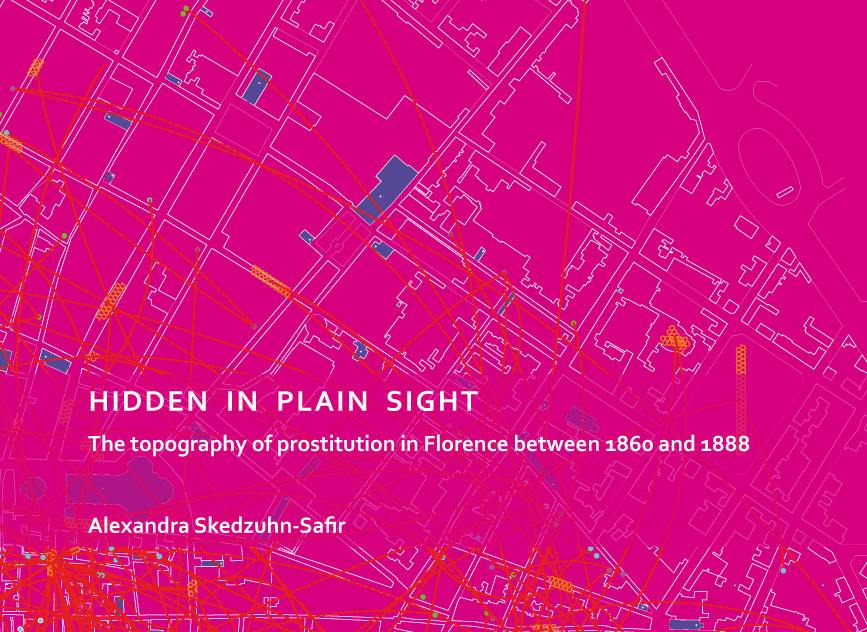Hidden in Plain Sight. The Topography of Prostitution in Florence between 1860 and 1880

Dr. Alexandra Skedzuhn-Safir
Betreuung: Prof. em. Dr. Leo Schmidt
Alexandra Skedzuhn-Safir has conducted an in-depth research of the topography of bordellos in Florence during the period between 1860 and 1888 when in the Italian Kingdom a new regulation on prostitution known as the Regolamento Cavour was introduced which spatially controlled female prostitutes and the bordellos they worked in. As a case study the research shows the topographic significance of prostitution and its spatial context.
Drawing primarily from over 5,000 documents of the police files kept at the State Archive in Florence she examined the location of prostitution of both registered and clandestinely operating prostitutes in relation to the legal framework provided by the regulation. Hundreds of – most likely often simple – vernacular structures were used as bordellos but today, as then, they bear no visible signs on their façades to identify their function. It is, though, their sheer number and their location throughout the historic city centre that renders these houses rather an ubiquitous phenomenon of that period, which demonstrates that they are not unique structures and consequently effected the lives of many people.
The value of these bordellos lies in their so-called contention value in which heritage is considered significant because it provokes discussion. Prostitution as a part of society still today provokes heated debates among different interest groups whether to prohibit, abolish or regulate prostitution.
Her research has shown that one of the main objectives of architectural conservation is to examine society, its values and if assigned values consider all of groups of society, even the marginalised.
